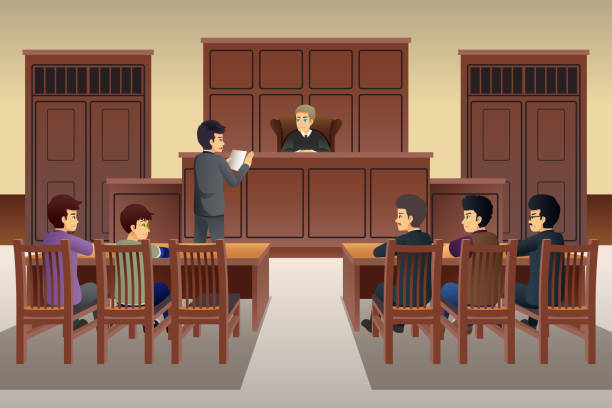In the realm of law, the supremacy lies in facts and evidence. However, effectively conveying complex information engagingly and understandably can take time and effort. This is precisely where the immense value of visual aids comes into play.
These powerful tools possess the remarkable ability to translate convoluted data into easily understandable visuals that hold the potential to sway a jury’s perception. But what exactly are these visual aids, and how do they assist legal professionals? Let’s explore this intriguing subject further.
Understanding Courtroom Trial Graphics
Courtroom trial graphics are visual aids used during legal proceedings to help illustrate complex information. They range from simple charts and diagrams to intricate animations and 3D models. The primary goal of these trial graphics is to make complex data, procedures, or events easily understandable for everyone in the courtroom.
Think of trial graphics as a bridge between the raw information and the jury’s understanding. Their role is to streamline the intricate, facilitating a more precise understanding for the jury. This, in turn, empowers them to render a well-informed verdict.
Types of Courtroom Trial Graphics
A vast array of courtroom trial graphics are available, each serving a unique purpose. Here are some common types:
- Animations: These are moving visuals that can depict a sequence of events, such as an accident reconstruction or a surgical procedure.
- Medical Illustrations: These are detailed drawings that can show the extent of a person’s injuries or explain a medical condition.
- Forensic Visuals: These visuals serve as valuable tools to effortlessly and comprehensively elucidate intricate scientific procedures, such as DNA testing or ballistics.
Different trial graphics are employed based on the case’s nature and the information that needs to be conveyed.
The Importance of Courtroom Trial Graphics
Courtroom trial graphics have become indispensable in legal proceedings in our modern and visually-oriented culture. These graphics serve as a powerful tool for lawyers to effectively communicate complex information in a captivating and easily understandable manner, ensuring that the jury fully grasps the intricacies of the case.
For instance, let’s consider a scenario involving a particularly intricate car accident. While a mere verbal explanation might leave the jury bewildered and struggling to visualize the sequence of events, an animated reconstruction of the accident can vividly illustrate the precise chain of occurrences. This dynamic and detailed representation enables the jury to understand the accident clearly and accurately, facilitating their ability to make informed decisions.
By leveraging the power of courtroom trial graphics, legal professionals can bridge the gap between complex information and audience comprehension, ultimately enhancing the effectiveness and impact of their presentations in the courtroom.
How Courtroom Trial Graphics Help Lawyers
Trial graphics are not just helpful for juries but also invaluable tools for lawyers. These visuals aid in effectively communicating their arguments, ensuring that the jury clearly understands and remembers their points.
Moreover, courtroom trial graphics can help lawyers win cases. By simplifying intricate details, they enhance the case comprehension for the jury, thereby increasing the likelihood of aligning with the lawyer’s perspective. Consider, for instance, a medical malpractice scenario where the lawyer can employ medical illustrations or animations to elucidate the surgical mishap.
This approach not only aids the jury in grasping the medical procedure but also highlights the deviation from the standard of care by the defendant, effectively bolstering the lawyer’s argument.
Case Studies
There are numerous cases where the use of trial graphics significantly influenced the outcome. In one instance, a complicated patent dispute was made understandable through diagrams and flowcharts, leading to a favorable verdict for the plaintiff.
In another instance, a 3D animation was utilized to recreate a crime scene, aiding the jury in visualizing the sequence of events and ultimately resulting in a conviction. These examples vividly demonstrate the immense impact of trial graphics in the courtroom, providing a compelling and persuasive narrative to the jurors.
Unleashing the Potential: The Transformative Power of Trial Graphics
In summary, the utilization of courtroom trial graphics is highly effective for attorneys in conveying intricate information in a compelling and comprehensible manner. These invaluable tools captivate the audience’s attention and facilitate a deeper understanding of complex concepts. Legal professionals can enhance their presentations by employing visually engaging graphics, making them more impactful and persuasive.
Incorporating such visual aids allows for a seamless and dynamic courtroom experience, enabling lawyers to communicate their arguments and evidence effectively. In essence, courtroom trial graphics serve as a vital asset in pursuing justice, ensuring a fair and accessible legal system for all.








